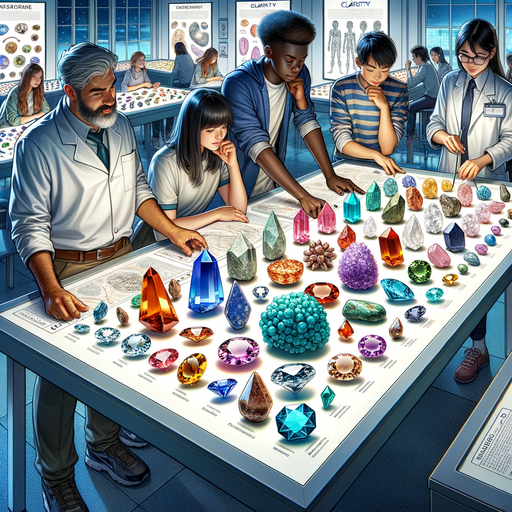Gemstones for Beginners: A Starter Guide
A simple guide to understanding and appreciating the fascinating world of gemstones.

Introduction
The world of gemstones is a dazzling array of color, rarity, and natural beauty. Each gemstone has its unique characteristics, from robust rubies to serene sapphires, making them a subject of fascination among geologists, jewelers, and geology enthusiasts alike. This post aims to provide a beginner-friendly introduction to gemstones, their formation, types, and some interesting facts.
Formation of Gemstones
Gemstones are formed under various conditions in the earth’s crust. Over millions of years, the interplay of heat, pressure, and chemical reactions give birth to these beautiful minerals. Different gemstones require different formation conditions, which is why they are found in various geographical regions worldwide.
Types of Gemstones
There are hundreds of types of gemstones, but for simplicity’s sake, let’s focus on some of the most popular ones:
-
Diamond: Known for its brilliance and hardness, it’s primarily composed of carbon and is the hardest known natural substance.
-
Ruby: A red gemstone that gets its color from chromium and is second only to diamond in terms of hardness.
-
Sapphire: Typically blue, but can come in a range of colors except red. Like rubies, sapphires are a variety of the mineral corundum.
-
Emerald: Known for its rich green color, it’s part of the beryl family of minerals.
-
Amethyst: A variety of quartz that’s recognized for its beautiful purple hue.
Here’s a comparison table for these gemstones:
| Gemstone | Color | Hardness (Mohs scale) | Primary Composition |
|---|---|---|---|
| Diamond | Clear | 10 | Carbon |
| Ruby | Red | 9 | Aluminium Oxide |
| Sapphire | Blue | 9 | Aluminium Oxide |
| Emerald | Green | 7.5-8 | Beryl |
| Amethyst | Purple | 7 | Silicon Dioxide |
“Every gemstone holds a little sun, a little moon, and a little star.” - Noor Unnahar
Fun Facts about Gemstones
-
Diamonds were first discovered in India over 2,400 years ago!
-
The Hope Diamond, one of the most famous gemstones, has been owned by several high-profile individuals, including King Louis XIV of France.
-
While diamonds are most famous for their white or clear color, they can come in almost any color, including black, blue, and pink.
-
The largest gem-quality ruby, the “Liberty Bell Ruby,” weighs around four pounds!
-
Some gemstones, like Opal, can display a phenomenon called “play-of-color,” where the stone appears to change colors when viewed from different angles.
For more detailed information on gemstones, you can visit the Gemological Institute of America’s (GIA) website.
Conclusion
The world of gemstones is vast and fascinating. While we’ve only scratched the surface in this beginner’s guide, we hope it has sparked your interest in these beautiful and intriguing creations of nature. Remember, every gemstone has its unique story of formation and characteristics that make it special. So, the next time you admire a gem, remember the incredible journey it took from the depths of the earth to your hands.